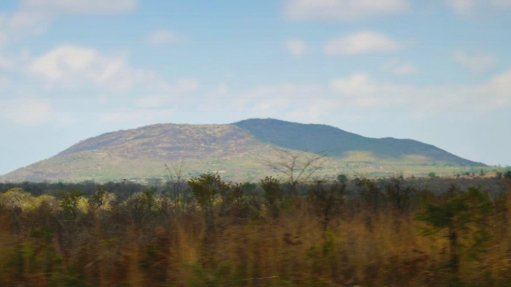Correct valve selection critical to a mining operation

Aveng Manufacturing Dynamic Fluid Control former sales engineer Ray Kirby discusses the importance of selecting the correct valve for use in a mining operation. Camerawork: Nicholas Boyd. Editing: Shane Williams.
Mining solutions provider Aveng Manufacturing Dynamic Fluid Control (DFC) former sales engineer Ray Kirby tells Mining Weekly that selecting the correct type of valve for applications in mining operations is important to ensure that the mine operates efficiently.
Kirby, a British expatriate, retired in May at the age of 87, after working in the valves industry in South Africa for about 30 years. He adds that companies should seek professional advice from valves manufacturers when buying their valves to avoid equipment malfunctions.
“Valves are application specific, selecting the wrong valve for the wrong application can have disastrous and expensive ramifications for a mining operation,” he stresses, adding that he has had to deal with numerous cases where valves had to be removed shortly after installation, owing to incorrect valve selection.
Kirby points out that, even in cases where customers do seek advice on correct valve selection, issues arise because many customers lack basic knowledge of the operation for which the valve is required.
“Therefore, critical information is not supplied to the engineer who is being consulted and this obviously hinders the quality of advice that the engineer can give the customer,” he notes.
Hence, Kirby stresses that customers must gather sufficient information to assist the engineer in giving relevant and appropriate advice on valve selection.
Manufacturing Facility
Aveng Manufacturing DFC mining division executive director Pat Stander says the company’s range includes valves for use in abrasive operating conditions, making its products perfectly suitable for African mining conditions.
He says the company has its own rubber processing facility in Benoni, on the East Rand, where it manufactures the rubbers used in its valve rubber linings, which are crucial to effective valve operation. This ensures the company has 100% control over the quality of the rubber.
Stander emphasises that using high-quality rubber correctly to line a valve is critically important to the life span of a valve.
Kirby adds that the life span of a valve depends on many variables, including operating conditions and how well the valve is maintained.
“A valve that is used in the mining industry should last at least 12 months, which is the warranty period most manufacturers offer,” he notes.
Development of Valves
Kirby also points out that valves were initially all manufactured from metal and had significant air and water leakages.
“This led to the development of the metal-cased diaphragm valves with flexible rubber diaphragms, which, although a simple concept, were designed to prevent the leakage of water and air,” he says, adding that these diaphragm valves had an efficient streamlined body and, owing to its bonnet, there were minimal levels of leakage.
Kirby says that leakage was amplified in the chemicals and water treatment industries.
“The improved diaphragm valves were initially lined with rubber. In later years, they were lined with glass and ethylene tetrafluoroethylene, which significantly improved the operating efficiencies of diaphragm valves,” he points out.
Kirby adds that the problem with diaphragm valves is that the larger-sized ones are heavy, which increases the difficulty of their installation.
He notes that the larger-sized diaphragm valves offer low air-pressure levels and, owing to improved operating efficiencies, their air pressures have increased significantly over the years – hence, the need to develop new valve technologies.
Kirby says that, more recently, local valve manufacturers introduced the knife-gate valve range for use in abrasive applications.
He says knife-gate valves are more compact than diaphragm valves.
However, he says that diaphragm valves remain popular, but only up to the 150 mm bore sizes, as Kirby advises that knife-gate valves should be used in larger bore sizes.
The most recent valve systems to enter the market are pinch valves, which are used for fluids and usually employ a device that directly compresses process tubing. It forces the tubing together and creates a seal equivalent to the tubing’s permeability.
Kirby believes that the best way for a company to trial a new valve system is to give the new valve to one or more of its customers to test at their facilities.
“Valve manufacturers have learnt through experience – by going to the site and checking to see how the system functions. This is the best way for a manufacturer to discover how the new valve system functions in an active operational setting,” he asserts.
Further, Stander says that, on average, it takes about 12 months to develop a new valve system.
Overcoming Adversity
Kirby enthuses that Aveng Manufacturing DFC has been able to withstand tough economic pressures, owing to its efficient operating practices and ability to engineer industry-leading valve technologies, when required.
He adds that the company has not been significantly affected by the flood of cheap Asian valve imports in recent years.
“This is because mining companies, which experimented with these cheap Asian imported valve systems, have experienced catastrophic failures, sometimes within a week of installation, and reverted to Aveng Manufacturing DFC’s high-quality range of valves.
“Major mining operations are aware that they cannot skimp on quality to save a few rands,” Kirby emphasises.
However, he also points out that not all imported valve systems are of a poor quality, particularly those manufactured in Europe and the Americas.
Kirby stresses that high-quality imported valves have many negative aspects, however, including the possibility of being more expensive than locally manufactured ones and the considerable time they often take to reach South Africa, which is a serious problem when a mine urgently requires a valve.
Aveng Manufacturing DFC manufactures most of its valves at its factory, but it also imports from its overseas operations, notes Stander.
Kirby says that the company regularly visits facilities of its raw material suppliers to ensure it receives only high-quality materials.
“It is critically important for manufacturers to pay attention to the materials they receive, as substandard materials will result in ineffi- cient products,” he asserts.
Kirby adds that the main challenges of developing new valve systems are the increasing air and a gas pressures that valves must be able to withstand. The increased operating pressures put greater strain on the life span and efficiency levels of the valves.
Growing Exports
“About 60% of the company’s sales consist of global exports to, for example, Africa, South America and the Baltic States,” highlights Stander.
He says the company has seen significant growth in its West African exports, as mining operations require high-quality products that can withstand harsh and abrasive conditions.
He adds that companies have to buy products that have long life spans, as they are often unable to easily access spares, which is the reason for Aveng Manufacturing DFC recording strong growth figures in its African operations.
Kirby notes that, although the company exports directly to mining operations, the company’s valves are also used by original-equipment manufacturers, such as global mining and minerals processing equipment supplier Multotec, which means, therefore, that the valves are used worldwide.
Maintenance
Kirby says it is important that valve systems are serviced regularly to ensure a longer life span. “For this reason, the company has established a training facility at its head offices, in Benoni, to train operators in the correct maintainance of their valve systems.”
Stander explains that the company established the facility to address the urgent but chronic challenge of a lack of skills in mining equipment maintenance.
However, he says maintenance remains a thorny problem for mining operations, as proper maintenance often requires equipment to be shut down for extended periods. This is not always possible, or practical, for mining operations, which suffer output losses for every hour the equipment is not running.
“The consequence of not addressing the issue of a leaking valve immediately, and leaving it for a later stage, will exacerbate the problem,” Kirby laments.
He adds that if a problem is addressed early, it could mean the difference between an inexpensive repair and a costly full replacement of a valve system.
Kirby says that, on newer valve systems, such as pinch valves, there is an electronic device in the sleeve of the valve, which alerts the operator that the rubber on the valve is wearing.
This, Kirby says, is assisting operators in averting catastrophic system failures – although he cautions that operators must still ensure that they do not ignore the pinch valves’ warning signals.
Future Developments
“I believe that future valve development will involve using new types of rubber linings to prolong the life span of the valves to enable valve applications to operate in more abrasive conditions,” says Stander.
He does not expect significant developments in the body of the valve, as modern valve casings are already significantly advanced.
“Over the years, I have seen many developments in valves technologies. Although I have retired from the industry, I have no doubts that Aveng Manufacturing DFC will play an important role in developing new valve systems and enhancing its existing range,” Kirby concludes.
Article Enquiry
Email Article
Save Article
Feedback
To advertise email advertising@creamermedia.co.za or click here
Press Office
Announcements
What's On
Subscribe to improve your user experience...
Option 1 (equivalent of R125 a month):
Receive a weekly copy of Creamer Media's Engineering News & Mining Weekly magazine
(print copy for those in South Africa and e-magazine for those outside of South Africa)
Receive daily email newsletters
Access to full search results
Access archive of magazine back copies
Access to Projects in Progress
Access to ONE Research Report of your choice in PDF format
Option 2 (equivalent of R375 a month):
All benefits from Option 1
PLUS
Access to Creamer Media's Research Channel Africa for ALL Research Reports, in PDF format, on various industrial and mining sectors
including Electricity; Water; Energy Transition; Hydrogen; Roads, Rail and Ports; Coal; Gold; Platinum; Battery Metals; etc.
Already a subscriber?
Forgotten your password?
Receive weekly copy of Creamer Media's Engineering News & Mining Weekly magazine (print copy for those in South Africa and e-magazine for those outside of South Africa)
➕
Recieve daily email newsletters
➕
Access to full search results
➕
Access archive of magazine back copies
➕
Access to Projects in Progress
➕
Access to ONE Research Report of your choice in PDF format
RESEARCH CHANNEL AFRICA
R4500 (equivalent of R375 a month)
SUBSCRIBEAll benefits from Option 1
➕
Access to Creamer Media's Research Channel Africa for ALL Research Reports on various industrial and mining sectors, in PDF format, including on:
Electricity
➕
Water
➕
Energy Transition
➕
Hydrogen
➕
Roads, Rail and Ports
➕
Coal
➕
Gold
➕
Platinum
➕
Battery Metals
➕
etc.
Receive all benefits from Option 1 or Option 2 delivered to numerous people at your company
➕
Multiple User names and Passwords for simultaneous log-ins
➕
Intranet integration access to all in your organisation



















